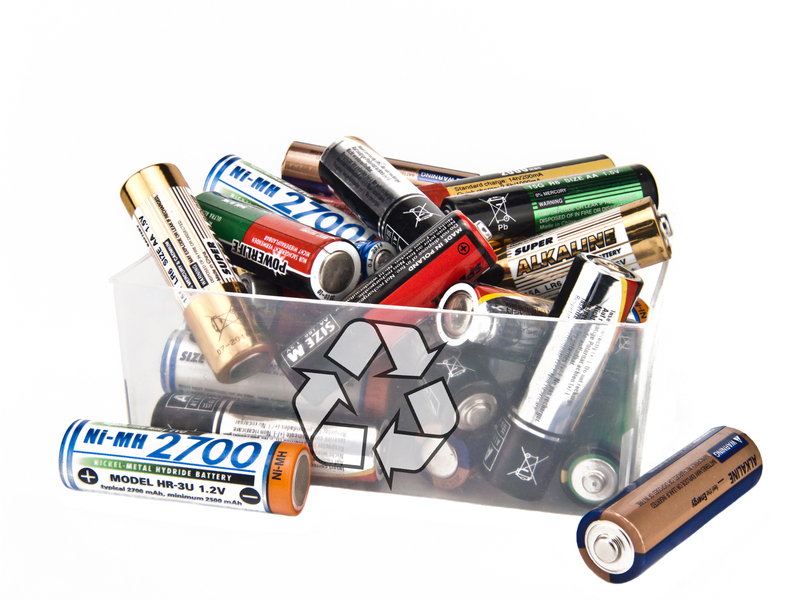Discover Ingenious Methods to Recycle Your Old Garments
Are you looking for creative ways to dispose of your outdated clothes without harming the environment? Recycling your old garments is not only eco-friendly, but it also offers an opportunity to show off your creativity and support the sustainability movement. In this comprehensive guide, you'll discover innovative ways to breathe new life into your clothes, reduce textile waste, and contribute to a greener planet.
Why Recycle Your Old Clothes?
Millions of tons of clothing end up in landfills every year, posing a huge threat to our environment. Recycling your worn-out or unused garments can help in several ways:
- Reduces landfill waste: Less clothing in trash means less pollution.
- Conserves resources: Recycling saves water, energy, and raw materials used to make new fabrics.
- Encourages creativity: Upcycling allows you to craft unique pieces from old materials.
- Supports communities: Donated clothes help those in need.

Understanding the Lifecycle of Your Clothes
Before delving into recycling techniques, it's important to understand what happens to your garments after disposal. Many textiles are non-biodegradable, leading to long-term environmental impacts. By adopting sustainable clothing practices, such as recycling and upcycling, you can dramatically shorten the journey from your wardrobe to the landfill.
Ingenious Methods to Recycle Your Old Garments
Below are creative and effective ways to make use of clothing you no longer wear. These methods range from hands-on DIY projects and fashionable makeovers to donating and repurposing in eco-friendly ways.
1. Donate to Charities and Organizations
One straightforward method to recycle your old garments is donating them to credible organizations. Whether they end up in the hands of someone in need or are resold to fund community projects, your clothes can serve a bigger purpose.
- Local shelters and thrift stores: Many shelters accept gently used clothing.
- Non-profit organizations: Groups like Goodwill, The Salvation Army, and Dress for Success distribute clothes to people in need.
- International relief programs: Some organizations send garments overseas to help disaster-struck or impoverished communities.
2. Upcycle: Transform Old Clothes into Something New
Upcycling is the process of converting old or discarded materials into something useful and often beautiful. With a little creativity, you can transform your old garments into trendy new items.
- Turn t-shirts into tote bags: A popular DIY project where old shirts become reusable shopping bags.
- Jeans to shorts or skirts: Simply snip and stitch to give worn jeans a fresh look.
- Patchwork blankets: Combine fabric scraps to create cozy throws or quilts.
- Fashion accessories: Use scraps for making headbands, bracelets, or even scarves.
- Pillow covers or cushion stuffing: Give your home decor a personal touch with recycled fabric.
3. Recycle Clothes at Specialized Facilities
When garments are too worn out for reuse, recycling centers can help. Textile recycling facilities break down fabrics into fibers that can be used for new products.
- Find local textile recycling bins: Many communities provide drop-off points specifically for clothing.
- Mail-in recycling programs: Companies like TerraCycle or For Days accept mail-in clothing for responsible processing.
- Retailer take-back programs: Brands like H&M and Levi's offer garment collection in-store, encouraging customers to bring back old clothes.
4. Craft and DIY Projects
Get your creative juices flowing with at-home projects using unwanted apparel. These ideas add a personal touch to your space and also serve as meaningful gifts.
- Mop and cleaning cloths: Cut up t-shirts and towels to create reusable cleaning rags.
- Pet beds or toys: Stuff old t-shirts or sweaters to create cozy beds or chew toys for pets.
- Plant hangers and pots: Macrame techniques with old fabric strips make lovely plant holders.
- Holiday decorations: Fabric scraps can become bunting, wreaths, or tree ornaments.
5. Host a Clothing Swap
A clothing swap is a fabulous, social, and sustainable way to recycle old garments. Invite friends, family, or neighbors to exchange gently used clothing. Not only does this promote responsible fashion consumption, but it also offers everyone a budget-friendly wardrobe makeover.
- Organize by season or style: Group similar items for easier swapping.
- Set theme parties: Vintage, children's clothes, accessories - the possibilities are endless!
- Encourage recycling of leftovers: Arrange donation or textile recycling for unclaimed clothes.
6. Compost Natural Fibers
Did you know that some old clothes can actually enrich your garden? If your garments are made from 100% natural fibers like cotton, linen, silk, or wool, you can compost them.
- Remove non-biodegradable elements: Take out buttons, zippers, and synthetic labels.
- Cut into small pieces: This helps the fabric break down more rapidly in the compost pile.
- Mix with other compost ingredients: Balance with "green" and "brown" matter for optimal decomposition.
7. Sell, Trade, or Repurpose Online
Online marketplaces give your old clothes a second life. Selling or trading used garments can be profitable and sustainable.
- Secondhand platforms: Websites like ThredUp, Depop, Poshmark, and eBay cater to pre-loved clothing.
- Barter groups: Join local social media groups to swap or donate clothes within your community.
- Repurpose for crafts: List fabric scraps or materials for sale or exchange, as hobbyists often seek unique fabrics.
Best Practices for Recycling Old Clothes
To make your garment recycling journey successful, follow these essential tips:
- Inspect before recycling: Ensure items destined for donation are clean and in usable condition.
- Sort by material: Separate synthetic and natural fibers for appropriate processing.
- Remove accessories: Buttons, zippers, and ornaments may require special recycling.
- Read labels: Some items require specific recycling methods based on their fabric composition.
- Contact local authorities: They may have information on garment recycling centers nearby.
Brands Leading the Clothing Recycling Movement
Many global brands now encourage textile recycling and offer incentives to customers who return their used garments. Look out for these eco-conscious initiatives:
- Patagonia: Offers Worn Wear initiative for recycling and buying used items.
- Levi's: Accepts denim for in-store recycling and partners with organizations to upcycle.
- H&M: Accepts garments and textiles--any brand, any condition--for recycling or reuse.
- Nike: Runs the "Reuse-A-Shoe" program for recycling sneakers into sports surfaces.
Benefits of Recycling Old Garments
The rewards of recycling old garments go far beyond clearing out your closet. Here are some larger benefits to inspire you:
- Decreases environmental pollution from textile waste and toxic chemicals.
- Reduces demand for fast fashion and the exploitation of non-renewable resources.
- Supports sustainable livelihoods through eco-friendly businesses and community programs.
- Promotes creativity and self-reliance in fashion and home decor.

Frequently Asked Questions about Recycling Clothes
What kind of clothes can be recycled?
Most types of clothes--including torn, stained, and worn-out garments--can be recycled if they are clean and dry. However, donations should be limited to wearable items without heavy damage.
Can synthetic fabrics be composted?
No, synthetic fabrics like polyester, nylon, and acrylic should never be composted. Only 100% natural fibers are suitable for composting.
How to recycle clothes that are not suitable for donation?
Drop them off at textile recycling centers, or use them for DIY projects (cleaning rags, pet bedding, crafts), or participate in retailer take-back schemes.
Is clothing recycling profitable?
Selling used garments can generate some extra income. Handcrafted items made through upcycling may also find a niche market.
Conclusion: Give Your Old Clothes a New Purpose
Learning how to recycle old garments is an essential part of sustainable living. Whether you donate, upcycle, swap, or recycle, each action contributes to a healthier planet and a more mindful lifestyle. Be imaginative, proactive, and eco-conscious--your wardrobe and the world will thank you!
Start your clothing recycling journey today, and inspire others to give their old garments a new lease on life!